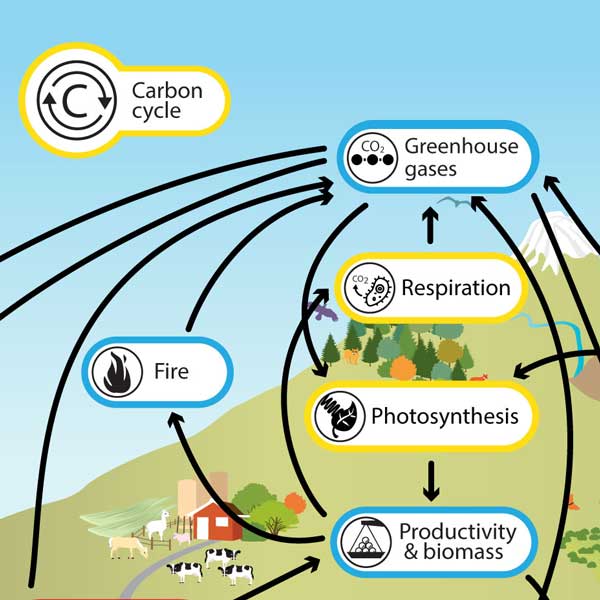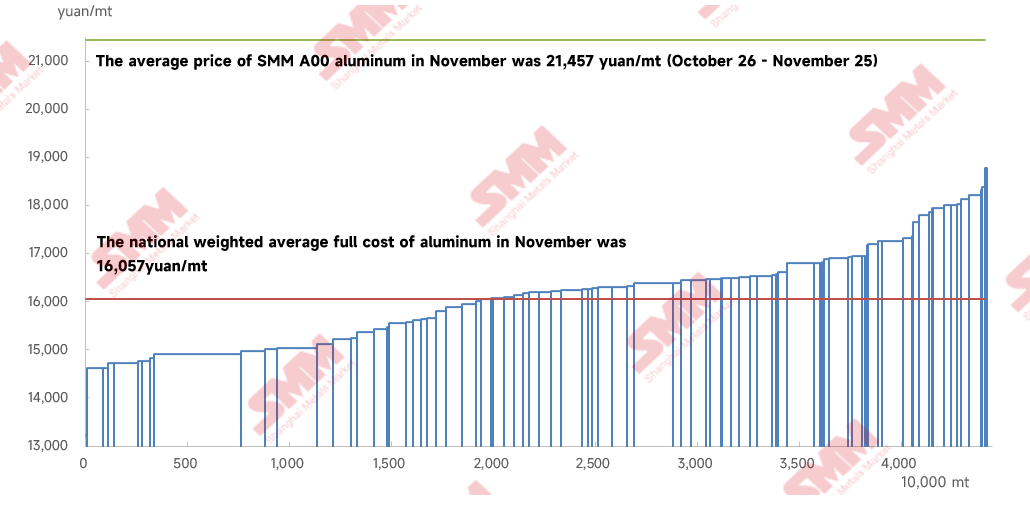Impacts of rising atmospheric dryness on terrestrial ecosystem carbon cycle – Nature

Report on Atmospheric Dryness and its Impact on Sustainable Development Goals
Introduction: A Threat to Climate Action and Life on Land
Rising atmospheric dryness, a critical environmental stressor, is significantly affecting the terrestrial ecosystem carbon cycle. This phenomenon poses a direct challenge to achieving key Sustainable Development Goals (SDGs), particularly SDG 13 (Climate Action) and SDG 15 (Life on Land). This report synthesizes historical and projected trends in atmospheric vapour pressure deficit (VPD), a proxy for atmospheric dryness, and analyzes its mechanisms of impact on the global carbon cycle.
VPD Trends and Climate Implications (SDG 13)
Historical Increase in Atmospheric Dryness
Analysis indicates a consistent and concerning increase in atmospheric dryness. Since the late 1990s, global mean VPD has increased at a mean rate of 0.0155 ± 0.0041 hPa yr−1. This trend signifies a growing threat to climate stability, directly undermining the objectives of SDG 13 by altering fundamental Earth system processes that regulate climate.
Impacts on Terrestrial Carbon Cycle and Life on Land (SDG 15)
Observed Reductions in Ecosystem Productivity
The increase in VPD has been linked to substantial global reductions in the productivity and health of terrestrial ecosystems, which are vital for fulfilling SDG 15. These ecosystems are critical carbon sinks, and their degradation compromises efforts to combat desertification, halt biodiversity loss, and ensure the conservation of terrestrial habitats. Observed global reductions include:
- Leaf Area Index: A reduction of 0.11 ± 0.07 m2 m−2 hPa−1 (1982–2015).
- Gross Primary Production: A reduction of 13.82 ± 3.12 PgC hPa−1 (1982–2015).
- Light Use Efficiency: A reduction of 0.04 ± 0.02 gC MJ−1 hPa−1 (2001–2020).
- Net Ecosystem Production: A reduction of 5.59 ± 1.15 PgC hPa−1 (1982–2013).
Underlying Mechanisms and Scientific Challenges
Physiological and Ecological Responses
The mechanisms through which VPD affects plant physiology and the broader ecosystem are complex and interconnected. Understanding these processes is crucial for developing targeted interventions to support SDG 15. Key mechanisms include:
- Stomatal closure, which limits carbon uptake.
- Hydraulic failure in plants.
- Abscisic acid biosynthesis, a stress response.
- Cascading effects, such as increased fire risk and soil moisture deficits, which threaten both ecosystems and human communities (SDG 11).
Attribution and Modeling Difficulties
Attributing observed changes in the terrestrial carbon cycle solely to VPD remains a scientific challenge. The influence of other environmental factors, such as soil moisture, temperature, and radiation, creates confounding effects. Furthermore, the underlying mechanisms of plant responses to VPD are poorly constrained, which limits the predictive capabilities of current terrestrial carbon cycle models. These limitations hinder the development of precise strategies for climate mitigation and ecosystem management.
Recommendations for Advancing Sustainable Development Goals
Strategic Research Priorities
To effectively address the threats posed by rising atmospheric dryness and make progress on SDG 13 and SDG 15, future research must be prioritized. The following actions are recommended:
- Establishment of global VPD-manipulation experiments to isolate its effects.
- Enhanced investigation into the feedback loops between VPD, plant physiology, and the carbon cycle.
- Integration of these refined mechanisms into the next generation of terrestrial carbon cycle models to improve predictive accuracy.
Improving the scientific understanding of these processes is essential for formulating effective policies to protect vital ecosystems and mitigate the impacts of climate change.
1. Which SDGs are addressed or connected to the issues highlighted in the article?
The article’s focus on the impacts of rising atmospheric dryness on the terrestrial ecosystem carbon cycle directly connects to the following Sustainable Development Goals (SDGs):
-
SDG 13: Climate Action
This goal is central to the article, which investigates a direct consequence of climate change: “Rising atmospheric dryness,” measured by the vapour pressure deficit (VPD). The article quantifies the increase in global mean VPD and analyzes its profound negative effects on the “terrestrial carbon cycle,” including reductions in gross primary production and net ecosystem production. By examining how climate change undermines the capacity of ecosystems to absorb carbon, the article directly addresses the core themes of climate change impacts, mitigation, and the need for adaptive understanding.
-
SDG 15: Life on Land
This goal is also directly addressed, as the article’s entire focus is on the physiological and systemic impacts on “terrestrial ecosystem[s].” It details the degradation of these ecosystems through “reductions in leaf area index,” “gross primary production,” and “net ecosystem production.” Furthermore, it mentions cascading effects such as increased risk of “fires” and “soil moisture deficits,” which are key threats to protecting, restoring, and promoting the sustainable use of terrestrial ecosystems, sustainably managing forests, and halting land degradation.
2. What specific targets under those SDGs can be identified based on the article’s content?
Based on the issues discussed, several specific SDG targets can be identified:
-
Target 13.1: Strengthen resilience and adaptive capacity to climate-related hazards and natural disasters in all countries.
The article connects rising atmospheric dryness to “cascading effects on fires.” Increased fire risk is a significant climate-related hazard. Understanding the physiological mechanisms that lead to drier vegetation and soils, as detailed in the article, is crucial for building resilience and developing adaptive strategies to mitigate the growing threat of wildfires.
-
Target 13.2: Integrate climate change measures into national policies, strategies and planning.
The article highlights that current “terrestrial carbon cycle models” have limited predictive capabilities because the mechanisms of plant response to VPD are “poorly constrained.” It calls for future research to better integrate these mechanisms into models. Improved models are essential scientific tools for informing effective climate change policies and strategies related to land use and carbon sequestration, which aligns with this target.
-
Target 15.2: By 2020, promote the implementation of sustainable management of all types of forests, halt deforestation, restore degraded forests and substantially increase afforestation and reforestation globally.
The observed “VPD-driven reductions in leaf area index… gross primary production… and net ecosystem production” signify a decline in forest health and productivity. This degradation undermines efforts to sustainably manage forests. The article’s findings provide a scientific basis for understanding a key environmental stressor that must be considered in forest management and restoration plans.
-
Target 15.3: By 2030, combat desertification, restore degraded land and soil, including land affected by desertification, drought and floods, and strive to achieve a land degradation-neutral world.
The article explicitly discusses “atmospheric dryness” and its link to “soil moisture deficits.” These are fundamental components of drought and land degradation processes. The reduction in plant productivity and leaf area contributes directly to the degradation of land, making the article’s subject matter highly relevant to combating these trends.
3. Are there any indicators mentioned or implied in the article that can be used to measure progress towards the identified targets?
Yes, the article is rich with specific, quantifiable indicators that can be used to measure the impacts of atmospheric dryness and track progress towards the related SDG targets.
-
Vapour Pressure Deficit (VPD)
The article uses VPD as the primary “proxy for atmospheric dryness.” It explicitly quantifies its trend, stating that “global mean VPD has increased at a mean rate of 0.0155 ± 0.0041 hPa yr−1.” Monitoring VPD is a direct way to track a key climate-related hazard relevant to Targets 13.1 and 15.3.
-
Leaf Area Index (LAI)
The article quantifies “reductions in leaf area index (0.11 ± 0.07 m2 m−2 hPa−1, 1982–2015).” LAI is a critical indicator of vegetation health, density, and the photosynthetic capacity of an ecosystem. Its decline is a direct measure of land and forest degradation (Targets 15.2 and 15.3).
-
Gross Primary Production (GPP)
The reduction in GPP is quantified as “(13.82 ± 3.12 PgC hPa−1, 1982–2015).” GPP measures the total amount of carbon captured by plants through photosynthesis. It is a fundamental indicator of ecosystem productivity and its role in the carbon cycle, relevant for tracking the health of terrestrial ecosystems (Target 15.2) and the effectiveness of climate mitigation efforts (Target 13.2).
-
Net Ecosystem Production (NEP)
The article reports a reduction in NEP of “(5.59 ± 1.15 PgC hPa−1, 1982–2013).” NEP represents the net carbon accumulation by an ecosystem (GPP minus ecosystem respiration). It is a direct indicator of whether an ecosystem is a net carbon sink or source, making it a vital metric for monitoring the terrestrial carbon cycle (Target 13.2) and the ecosystem services provided by forests and land (Target 15.2).
-
Incidence and Extent of Fires
This is implied as a key indicator through the mention of “cascading effects on fires.” Tracking the frequency, intensity, and area of wildfires is a direct measure of climate-related hazards and ecosystem degradation (Targets 13.1 and 15.2).
-
Soil Moisture Levels
This is implied by the mention of “soil moisture deficits.” Monitoring soil moisture is a direct indicator of drought conditions and the risk of land degradation and desertification (Target 15.3).
4. SDGs, Targets and Indicators Table
| SDGs | Targets | Indicators |
|---|---|---|
| SDG 13: Climate Action | 13.1: Strengthen resilience and adaptive capacity to climate-related hazards. |
|
| 13.2: Integrate climate change measures into national policies, strategies and planning. |
|
|
| SDG 15: Life on Land | 15.2: Promote sustainable management of forests, halt deforestation, restore degraded forests. |
|
| 15.3: Combat desertification, restore degraded land and soil. |
|
Source: nature.com

What is Your Reaction?
 Like
0
Like
0
 Dislike
0
Dislike
0
 Love
0
Love
0
 Funny
0
Funny
0
 Angry
0
Angry
0
 Sad
0
Sad
0
 Wow
0
Wow
0




















































.jpg.webp?itok=0ZsAnae9#)


























